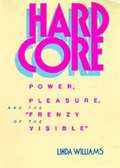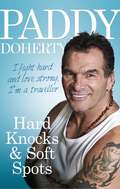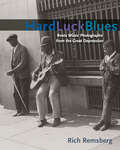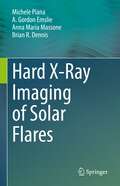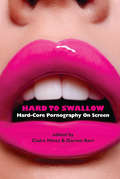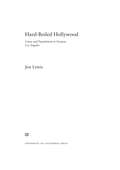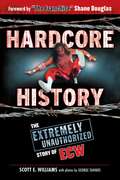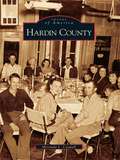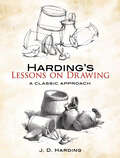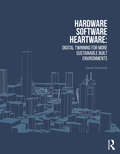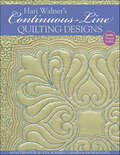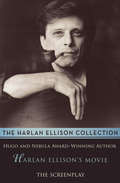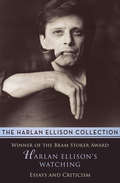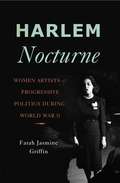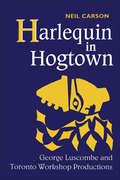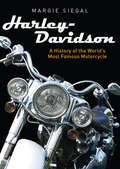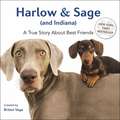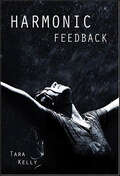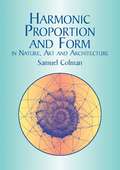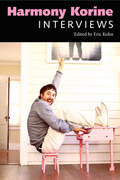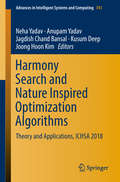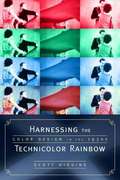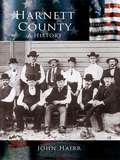- Table View
- List View
Hard Art, DC 1979
by Lucian PerkinsCapital Gift 2013, DCist"Photos capturing the raw magnetism of performers like Charlie Danbury of Trenchmouth and H.R. of Bad Brains signal the power of the music. Perkins is also fascinated with the audience at these events, showcasing dingy stairwells and sweat-glazed faces. In telling shots, performers and audience blur into a frenzied mass. Musician MacKaye, of the Untouchables, gives a firsthand account of being a 14-year-old at these shows, crossing dangerous parts of D.C. in order to stand with strangers in derelict buildings and hear live music. Musician Rollins's brief essay on one of the bands, the Teen Idles, speaks to the intensity and commitment of those involved."--Publishers Weekly"What do punk rock, a Washington Post reporter and books have in common?...For the most part, nothing--except for books by Washington Post reporters about punk rock."--Huffington Post"Many punk fans will purchase Hard Art for the novelty of seeing H.R. as he was before Bad Brains moved to New York and became legends, or Ian MacKaye as he was before he shaved his head, and formed Dischord Records, Minor Threat, and Fugazi. The book deserves a wider readership than that. Perkins's skill as a portraitist is such that you can see the energy and potential in these young men's faces even without the context of their future roles as icons. Equally worthwhile are the portraits of those who did not become icons, but participated in the shows."--Philadelphia Review of Books"A great document for the DC scene."--TRUST FanzineIn 1979, a soon-to-erupt punk scene took hold in Washington, DC, with bands like the Bad Brains, Trenchmouth, Teen Idles, the Untouchables, and the Slickee Boys, among others, at the forefront. Lucian Perkins, later a Pulitzer Prize-winning photojournalist for the Washington Post, was then an intern who photographed several pivotal shows over a short period of time. His now iconic photos of these shows are complemented by punk rock musician Alec MacKaye's narrative that runs throughout the book and an essay by Henry Rollins.Hard Art, DC 1979 is both a book and a traveling exhibition of photographs by Lucian Perkins. The exhibition is curated and edited by photographer and photo editor Lely Constantinople and Jayme McLellan, director of Civilian Art Projects, Washington, DC, with photographs being shown as a group for the first time.In 1995, Lely Constantinople was hired by Perkins to manage his extensive photographic collection spanning a twenty-five year career with the Post. While looking through negatives in his basement, she found the punk images and recognized MacKaye, her then boyfriend (now husband). She asked to make contact sheets to show him, thinking he might recognize himself and others, and was surprised by how excited MacKaye was to see the images. "Those pictures were the holy grail! Not that many people brought cameras to shows then so I always wondered who he was and what happened to the pictures he took. He was at some of the best shows."MacKaye's text offers an intimate exploration of the moment from two perspectives: that of a fourteen-year-old experiencing music on his own terms for the first time, and a look again at a movement that fueled an underground generation musically and philosophically. His examination is not a nostalgic review of glory days gone, as much as a present conversation about the continuation of a way of thinking that still endures. Hard Art, DC 1979 is an intimate snapshot of "the time before the time" that punk rock found firm footing in the US. These images capture the cathartic, infectious energy present in any group of people who seek to change their communities through music and art.
Hard Core: Power, Pleasure and the Frenzy of the Visible
by Linda D. WilliamsA history and analysis of pornography, including its effect on women, whether it's art, and as a diverse social genre subject to societal pressures.
Hard Knocks & Soft Spots
by Paddy Doherty'I fight hard and love strong. I'm a traveller.'Paddy Doherty loves his life as an Irish traveller, but as a child he felt like an outsider. He was different to his siblings. On the rare occasions he went to school, he was bullied for being a gypsy boy. And beyond the gates of the camp he found nothing but hostility. Slowly, Paddy's hurt turned into anger and by the age of 11 he had started out on an illustrious career in bare-knuckle fighting. This earned him a position as one of the most well-respected (and feared) men in the travelling community. Yet while he won countless contests in the ring, the real battles he faced were very much outside.In this deeply honest autobiography, he tells of how he has loved and lost five children; plummeted to seven stone while battling depression, drink and drugs. He describes how it feels to be shot point-blank in the head and the lengths he'll go to to protect his people, as well as life since My Big Fat Gypsy Wedding and Big Brother.Told with all the warmth and humour he is famed for, Paddy's rich and colourful story is one that will stay with you for a long time to come.
Hard Luck Blues: Roots Music Photographs from the Great Depression (Music in American Life)
by Rich RemsbergShowcasing American music and music making during the Great Depression, Hard Luck Blues presents more than two hundred photographs created by the New Deal's Farm Security Administration photography program. With an appreciation for the amateur and the local, FSA photographers depicted a range of musicians sharing the regular music of everyday life, from informal songs in migrant work camps, farmers' homes, barn dances, and on street corners to organized performances at church revivals, dance halls, and community festivals. Captured across the nation from the northeast to the southwest, the images document the last generation of musicians who learned to play without the influence of recorded sound, as well as some of the pioneers of Chicago's R & B scene and the first years of amplified instruments. The best visual representation of American roots music performance during the Depression era, Hard Luck Blues features photographs by Jack Delano, Dorothea Lange, Russell Lee, Arthur Rothstein, Ben Shahn, Marion Post Wolcott, and others. Photographer and image researcher Rich Remsberg breathes life into the images by providing contextual details about the persons and events captured, in some cases drawing on interviews with the photographers' subjects. Also included are a foreword by author Nicholas Dawidoff and an afterword by music historian Henry Sapoznik. Published in association with the Library of Congress.
Hard X-Ray Imaging of Solar Flares
by Michele Piana A. Gordon Emslie Anna Maria Massone Brian R. DennisThe idea for this text emerged over several years as the authors participated in research projects related to analysis of data from NASA's RHESSI Small Explorer mission. The data produced over the operational lifetime of this mission inspired many investigations related to a specific science question: the when, where, and how of electron acceleration during solar flares in the stressed magnetic environment of the active Sun.A vital key to unlocking this science problem is the ability to produce high-quality images of hard X-rays produced by bremsstrahlung radiation from electrons accelerated during a solar flare. The only practical way to do this within the technological and budgetary limitations of the RHESSI era was to opt for indirect modalities in which imaging information is encoded as a set of two-dimensional spatial Fourier components. Radio astronomers had employed Fourier imaging for many years. However, differently than for radio astronomy, X-ray images produced by RHESSI had to be constructed from a very limited number of sparsely distributed and very noisy Fourier components. Further, Fourier imaging is hardly intuitive, and extensive validation of the methods was necessary to ensure that they produced images with sufficient accuracy and fidelity for scientific applications.This book summarizes the results of this development of imaging techniques specifically designed for this form of data. It covers a set of published works that span over two decades, during which various imaging methods were introduced, validated, and applied to observations. Also considering that a new Fourier-based telescope, STIX, is now entering its nominal phase on-board the ESA Solar Orbiter, it became more and more apparent to the authors that it would be a good idea to put together a compendium of these imaging methods and their applications. Hence the book you are now reading.
Hard to Swallow: Hard-Core Pornography on Screen
by Darren Kerr Hines ClaireEven in our increasingly sexualized culture hard-core pornography and the representation of explicit sex is still hard to swallow. This lively and provocative new collection of essays by leading scholars explores screen representations of pornography and sex in a variety of cultural, historical, and critical contexts. Contributions cover a wide range of topics from sex in the multiplex to online alt-porn, from women in stag films to the excesses of extreme pornography, and a variety of contemporary case studies including porn performance, fashion in hard-core, and gay and lesbian pornography.
Hard-Boiled Hollywood: Crime and Punishment in Postwar Los Angeles
by Jon LewisThe tragic and mysterious circumstances surrounding the deaths of Elizabeth Short, or the Black Dahlia, and Marilyn Monroe ripped open Hollywood’s glitzy façade, exposing the city's ugly underbelly of corruption, crime, and murder. These two spectacular dead bodies, one found dumped and posed in a vacant lot in January 1947, the other found dead in her home in August 1962, bookend this new history of Hollywood. Short and Monroe are just two of the many left for dead after the collapse of the studio system, Hollywood’s awkward adolescence when the company town’s many competing subcultures—celebrities, moguls, mobsters, gossip mongers, industry wannabes, and desperate transients—came into frequent contact and conflict. Hard-Boiled Hollywood focuses on the lives lost at the crossroads between a dreamed-of Los Angeles and the real thing after the Second World War, where reality was anything but glamorous."
Hardcore History: The Extremely Unauthorized Story of ECW
by Scott E. Williams George Tahinos Shane DouglasExtreme Championship Wrestling (ECW) was one extreme contradiction on top of another. An incredibly influential-but never profitable-company in the world of professional wrestling in the 1990s, it portrayed itself as the ultimate in anti-authority rebellion, but its leadership was working covertly with the World Wrestling Federation and the World Championship Wrestling. Most of all, it blurred the line between reality and the fantasy world of professional wrestling.Hardcore History: The Extremely Unauthorized Story of ECW offers a frank, balanced look at the evolution of ECW starting before its early days as a Philadelphia-area independent group and extending past its death in 2001. Featuring dozens of interviews with fans, officials, business partners, and the wrestlers themselves, this is a very balanced account of this bizarre company-and it’s sure to be extremely controversial for fans and critics of ECW, and wrestling, alike.Skyhorse Publishing, as well as our Sports Publishing imprint, is proud to publish a broad range of books for readers interested in sports-books about baseball, pro football, college football, pro and college basketball, hockey, or soccer, we have a book about your sport or your team.In addition to books on popular team sports, we also publish books for a wide variety of athletes and sports enthusiasts, including books on running, cycling, horseback riding, swimming, tennis, martial arts, golf, camping, hiking, aviation, boating, and so much more. While not every title we publish becomes a New York Times bestseller or a national bestseller, we are committed to publishing books on subjects that are sometimes overlooked by other publishers and to authors whose work might not otherwise find a home.
Hardin County (Images of America)
by Meranda L. CaswellThe history of Hardin County is defined by such notable figures as John Hardin, the Revolutionary War colonel for whom the area is named, and Abraham Lincoln, who was born here in 1809. Today tourists and residents can visit historic sites that commemorate these individuals and those lesser-known, such as John Y. Hill, who built the stately home that is now the Brown-Pusey House, a museum and library. In Images of America: Hardin County, vintage photographs depict the past of the county seat, Elizabethtown, and also that of the smaller towns of Colesburg, Glendale, Hardin Springs, and White Mills. Thecommunities of Stithton and Grahamton are pictured as theywere before being replaced by the Fort Knox Bullion Depository and military post. Featuring images from the Brown-Pusey House and the community, this volume takes readers down Dixie Highway to appreciate the historic towns and natural beauty of Hardin County.
Harding's Lessons on Drawing: A Classic Approach
by J. D. HardingJohn Ruskin's drawing master and sketching companion, James Duffield Harding (1798-1863) ranked among nineteenth-century England's most respected watercolorists, art critics, and teachers. Harding's reputation as an elegant, well-trained, and accomplished sketcher is evidenced by his drawings from nature and his compositions of picturesque landscapes. With this manual, the great instructor offers practical advice about the best methods, in addition to pointers on how to cultivate the kinds of correct observation and sound judgment that endow drawings with life.Through 127 distinct lessons, Harding trains both the hand and the mind. He discusses the fundamentals of drawing lines and circles, the depiction of light and shade, the formation of accurate perspective, and many other techniques. Succinct examination questions help reinforce the teachings, along with numerous illustrations throughout the text.
Hardware Acceleration of Computational Holography
by Tomoyoshi Shimobaba Tomoyoshi ItoThis book explains the hardware implementation of computational holography and hardware acceleration techniques, along with a number ofconcrete example source codes that enable fast computation. Computational holography includes computer-based holographictechnologies such as computer-generated hologram and digital holography, for which acceleration of wave-optics computation is highly desirable.This book describes hardware implementations on CPUs (Central Processing Units), GPUs (Graphics Processing Units) and FPGAs (Field ProgrammableGate Arrays).This book is intended for readers involved in holography as well as anyone interested in hardware acceleration.
Hardware, Software, Heartware: Digital Twinning for More Sustainable Built Environments
by Jason PomeroyThis richly illustrated book examines the full potential of Digital Twins (DTs) as a means of creating more sustainable urban habitats. It reveals how, in this digitally-enabled age, DTs are increasingly being adopted by cities as a tool for urban governance, with the hope of increasing operational efficiencies and enhancing citizens’ lives. While the study and implementation of DTs has been critically explored as virtual, dynamic 3D replicas of physical entities across different disciplines and industries, this book establishes a strategy that recognises the need for the ‘software’ behind virtual DT platforms to not only represent the ‘hardware’ of our physical cities but also to reflect the ‘heartware’ of socio-economic and cultural practices. Knowledge gaps and challenges in existing DTs are identified and insights into rethinking their purpose are provided to propose a new DT paradigm model for city-wide application. With multiple case studies illustrating the different concepts of DTs being applied in cities from Europe, North America, The Middle East, Asia and Oceania, the book highlights the reasons why and how DTs can play an integral role in the sustainability of our urban habitats. Beautifully designed and illustrated in full colour throughout, this book combines academic theory with practical application and will be a useful reference for professionals, students, academics and policymakers, working in the fields of smart cities, sustainable urbanism, and the digitisation, digitalisation and digital transformation of the built environment industry.
Hari Walner's Continuous-Line Quilting Designs: 80 Patterns for Blocks, Borders, Corners, & Backgrounds
by Hari WalnerA Smooth Path for Your Quilting 80 original continuous-line designs for hand or machine quilting Spend less time starting, stopping, and securing stitches Visual design index makes it easy to find the best patterns for your quilt Includes tips on machine quilting, marking, and background stitching Best-selling author Hari Walner is back with brand new quilting patterns and also variations on old favorites. This book has something for everyone, from sophisticated motifs to sweet animal faces. Directional diagrams make it easy to smoothly stitch your design from start to finish in one continuous line.
Harlan Ellison's Movie: The Screenplay
by Harlan EllisonHerein lies in written form Harlan Ellison's Movie, the full-length feature film Ellison created when a producer at 20th Century-Fox said, "If we gave you the money, and no interference, what sort of movie would you write?" Well, that producer is no longer at the studio; he left the entire venue of moviemaking after Harlan Ellison's Movie was seen by the Suits. There is no use even trying to describe what the film is about, except to confirm the long-standing rumor that it contains a scene in which a 70-foot-tall boll weevil chews and swallows an entire farmhouse and silo on-camera. (It is Scene 33C.)
Harlan Ellison's Watching: Essays and Criticism
by Harlan EllisonOstensibly, this is a collection of Harlan Ellison's twenty-five years of essays and film criticism for various publications. What it is in reality is pure, raw, unapologetic opinion. Star Wars? "Luke Skywalker is a nerd and Darth Vader sucks runny eggs." Big Trouble in Little China? "A cheerfully blathering live-action cartoon that will give you release from the real pressures of your basically dreary lives." Despite working within the industry himself, Ellison never learned how to lie. So punches go un-pulled, the impersonal becomes personal, and the reader is left feeling like they have read something someone actually meant. It is a gauntlet, for sure, but it is also an exhilarating release.
Harlem Nocturne: Women Artists and Progressive Politics During World War II
by Farah Jasmine GriffinAs World War II raged overseas, Harlem witnessed a battle of its own. Brimming with creative and political energy, Harlem's diverse array of artists and activists launched a bold cultural offensive aimed at winning democracy for all Americans, regardless of race or gender. In Harlem Nocturne, esteemed scholar Farah Jasmine Griffin tells the stories of three black female artists whose creative and political efforts fueled this movement for change: novelist Ann Petry, a major new literary voice; choreographer and dancer Pearl Primus, a pioneer in her field; and composer and pianist Mary Lou Williams, a prominent figure in the emergence of Be-Bop. As Griffin shows, these women made enormous strides for social justice during the war, laying the groundwork for the Civil Rights Movement before the Cold War temporarily froze their democratic dreams.A rich account of three distinguished artists and the city that inspired them, Harlem Nocturne captures a period of unprecedented vitality and progress for African Americans and women in the United States.
Harlequin in Hogtown: George Luscombe and Toronto Workshop Productions
by Neil CarsonA history of Toronto's first alternative theater company during its 30-year run, 1959-89, pivoting on its artistic director Luscombe. He brought techniques from London and started in a factory basement with collective plays and original European works. The company acquired a reputation and in 1967 its own building. But in the early 1970's nationalist sentiments and newer forms of alternative theatre left the TWP backstage without cues. Canadian card number: C95-930446-0. Annotation copyright by Book News, Inc. , Portland, OR
Harley-Davidson: A History of the World's Most Famous Motorcycle
by Margie SiegalHarley-Davidson: words that evoke the open American road and the 'Made in America' tradition like no others. The sweeping chopper handlebars, the distinctive throaty 'potato potato' roar of the engine and the unmistakable logo are all emblems recognized the world over. This book expertly ties together the mechanical evolution of the Harley's engines - from the earliest motorized pedal bicycles to the iconic heavyweight twin cylinder V-engines we know and love today - and the social history of the brand's phenomenal rise in the twentieth century, as innovative survivor of the Great Depression, supplier of the military during both World Wars and enduring symbol of freedom and rebellion in movies such as 'Easy Rider'. It is fully illustrated with pictures of the bikes and those who have ridden them as well as beautiful examples of H-D's distinctive design aesthetic in advertising and collectibles.
Harlow & Sage (and Indiana)
by Brittni VegaINTRODUCING HARLOW & SAGE (AND INDIANA), "THE MOST ADORABLE BEST FRIENDS IN THE WORLD" (Buzzfeed) WHO HAVE TAKEN SOCIAL MEDIA BY STORM Once upon a time, Harlow's best friend was her older sister, Sage, a thoughtful and loving miniature Dachshund. Harlow and Sage had a shared love for many things, including Christmas presents and the legendary Meryl Streep. They played together, cuddled together, and shared their deepest secrets, until September 2013, when, sadly, it was Sage's time to retire to the doggie palace in the sky. Shortly after Sage's passing, Harlow's parents came home with Indiana, a Dachshund puppy with a killer sense of humor. It took a little getting used to, but after a few months of showing Indiana the ropes, Harlow began to recognize that a new adventure was about to unfold.Written in the wise and witty voice of Harlow the Weimaraner, and richly illustrated with more than 125 stunning images of the highly photogenic pups, Harlow and Sage (and Indiana) is a tale about the bond among three dogs, connected by deep love and unparalleled friendship. (It is also a little about Meryl.)
Harmonic Feedback
by Tara KellySixteen-year-old, music- and sound design-obsessed Drea doesn't have friends. She has, as she's often reminded, issues. Drea's mom and a rotating band of psychiatrists have settled on "a touch of Asperger's."Having just moved to the latest in a string of new towns, Drea meets two other outsiders. And Naomi and Justin seem to actually like Drea. The three of them form a band after an impromptu, Portishead-comparison-worthy jam after school. Justin swiftly challenges not only Drea's preference for Poe over Black Lab but also her perceived inability to connect with another person. Justin, against all odds, may even like like Drea. It's obvious that Drea can't hide behind her sound equipment anymore. But just when she's found not one but two true friends, can she stand to lose one of them?Harmonic Feedback is a 2011 Bank Street - Best Children's Book of the Year.
Harmonic Proportion and Form in Nature, Art and Architecture (General Science)
by Samuel ColmanA treatise on the laws governing proportional form in both nature and the arts and sciences, this well-illustrated volume amply demonstrates how a design's geometrical construction can captivate both the eye and the mind. Flowers, shells, and other natural organisms appear here, along with artistic creations, in a mathematical study of the similarity of their constructive principles. These principles, in turn, are the fundamental elements by which nature creates harmony.The author, Samuel Colman (1832–1920), was a prominent member of the Hudson River School of painters ("Storm King on the Hudson," his 1866 oil on canvas, is one of his best-known works), and an embodiment through his life and work of the school's celebration of nature through art. As an activist in the politics of art, Colman helped form the Society of American Artists as well as the American Society of Painters in Water Colors, a relatively new medium at the time. He was also a teacher and associate of Louis Comfort Tiffany; in 1879, the two joined forces to establish an interior design firm that included Mark Twain among its clientele.This handsome and provocative volume is enhanced by 302 drawings by the author that complement and amplify each subject area discussed. It also includes an important Mathematical Analysis by the editor, C. Arthur Coan. As a multifaceted study, this book will find an audience among artists and philosophers, as well as scientists and mathematicians.
Harmony Korine: Interviews (Conversations with Filmmakers Series)
by Eric KohnHarmony Korine: Interviews tracks filmmaker Korine's stunning rise, fall, and rise again through his own evolving voice. Bringing together interviews collected from over two decades, this unique chronicle includes rare interviews unavailable in print for years and an extensive, new conversation recorded at the filmmaker's home in Nashville.After more than twenty years, Harmony Korine (b. 1973) remains one of the most prominent and yet subversive filmmakers in America. Ever since his entry into the independent film scene as the irrepressible prodigy who wrote the screenplay for Larry Clark's Kids in 1992, Korine has retained his stature as the ultimate cinematic provocateur. He both intelligently observes modern social milieus and simultaneously thumbs his nose at them. Now approaching middle age, and more influential than ever, Korine remains intentionally sensationalistic and ceaselessly creative.He parlayed the success of Kids into directing the dreamy portrait of neglect, Gummo, two years later. With his audacious 1999 digital video drama Julien Donkey-Boy, Korine continued to demonstrate a penchant for fusing experimental, subversive interests with lyrical narrative techniques. Surviving an early career burnout, he resurfaced with a trifecta of insightful works that built on his earlier aesthetic leanings: a surprisingly delicate rumination on identity (Mister Lonely), a gritty quasi-diary film (Trash Humpers), and a blistering portrait of American hedonism (Spring Breakers), which yielded significant commercial success. Throughout his career he has also continued as a mixed-media artist whose fields included music videos, paintings, photography, publishing, songwriting, and performance art.
Harmony Search and Nature Inspired Optimization Algorithms: Theory and Applications, ICHSA 2018 (Advances in Intelligent Systems and Computing #741)
by Neha Yadav Anupam Yadav Kusum Deep Jagdish Chand Bansal Joong Hoon KimThe book covers different aspects of real-world applications of optimization algorithms. It provides insights from the Fourth International Conference on Harmony Search, Soft Computing and Applications held at BML Munjal University, Gurgaon, India on February 7–9, 2018. It consists of research articles on novel and newly proposed optimization algorithms; the theoretical study of nature-inspired optimization algorithms; numerically established results of nature-inspired optimization algorithms; and real-world applications of optimization algorithms and synthetic benchmarking of optimization algorithms.
Harnessing the Technicolor Rainbow: Color Design in the 1930s
by Scott HigginsLike Dorothy waking up over the rainbow in the Land of Oz, Hollywood discovered a vivid new world of color in the 1930s. The introduction of three-color Technicolor technology in 1932 gave filmmakers a powerful tool with which to guide viewers' attention, punctuate turning points, and express emotional subtext. Although many producers and filmmakers initially resisted the use of color, Technicolor designers, led by the legendary Natalie Kalmus, developed an aesthetic that complemented the classical Hollywood filmmaking style while still offering innovative novelty. By the end of the 1930s, color in film was thoroughly harnessed to narrative, and it became elegantly expressive without threatening the coherence of the film's imaginary world.
Harnett County: A History
by John HairrMarked by the diversity of its land and the resilience of its people, Harnett County boasts a rich history characterized by military battles and local politics, notable figures and prominent industries, and the commitment of its people to improve their communities for future generations. From the steep hills and swift creeks of the Piedmont to the scrub oaks and barren soil of the Sandhills, from the Mingo Swamp to the Cape Fear River, Harnett County's topography has challenged and inspired newcomers for centuries, strengthening their spirit, hardening their resolve, and shaping each community they created.In the eighteenth century, stalwart pioneers began to establish settlements in the rough and varied landscape of the region that was one day to become Harnett County. Traveling along old Native American trails or following the watery highways of the Cape Fear River and its tributaries, these mainly European settlers-including a large influx of Highland Scots-made their way into the remote interior of the province, where they constructed modest cabins and set about farming the land. Through the years, the people of Harnett joined in the struggles to win freedom from England, to defend the South, and to battle the forces of evil on the other side of the world, but they also fought to build strong communities, such as Erwin, Lillington, and Dunn, and to enhance the daily lives of all county residents. Plank roads and canals, mills and iron works, railroads and academies, all served to connect citizens to the world beyond their doors and to advance the growing prosperity. Situated between the metropolitan cities of Raleigh and Fayetteville, the county begins the new century with a focus on developing industry and fostering the pride so deeply felt by all who call Harnett County home.

